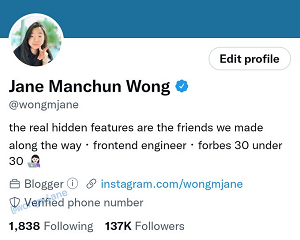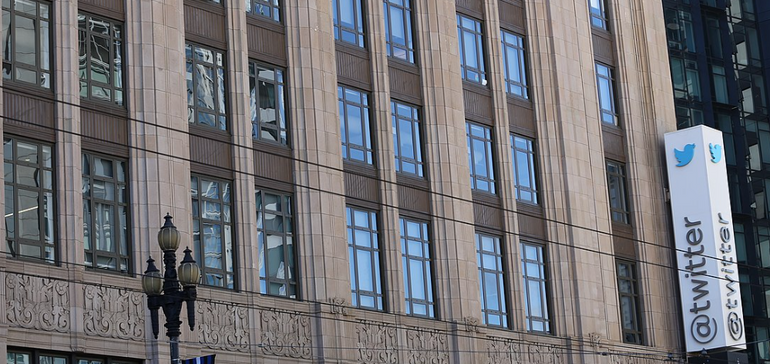The upcoming Elon Musk/Twitter court battle look set to spark major friction in the Twitter camp, whether Musk’s team wins its legal battle to cancel his $44 billion takeover bid or not.
Fresh off of roping in former Twitter product chief Kayvon Beykpour to give evidence relating to what he knew about Twitter’s claims that only 5% of its active users are fake or spam, Musk’s team has now also subpoenaed former Twitter CEO Jack Dorsey, who has been a vocal supporter of Musk, and was the one who originally called for Elon to join Twitter’s board.
In principle, I don’t believe anyone should own or run Twitter. It wants to be a public good at a protocol level, not a company. Solving for the problem of it being a company however, Elon is the singular solution I trust. I trust his mission to extend the light of consciousness.
— jack (@jack) April 26, 2022
That ‘light of consciousness’ quote, which refers to Musk’s previous statements about his personal ambition, is so horrendous, it amazes me that any self-respecting businessperson can use it with a straight face.
But consciousness considerations aside, the fact that Dorsey and Beykpour will be called before the court to discuss their knowledge, or not, of Twitter’s operations could be key tipping point, maybe not for the legal case itself, but in terms of the rift that it could cause within Twitter’s own structure and make up, with Dorsey, in particular, now set to be put in the middle of his former company and a friend whom he deeply respects.
What will that mean for Team Musk’s chances of exiting his Twitter takeover deal?
Well, it depends on how you see it – right now, Elon and Co. are pushing the argument that the amount of fake/spam accounts on Twitter is far more than 5% of its 238 million mDAU count. By Musk’s team’s estimate, it’s more like 27%, while they also claim that only 7% of Twitter users are actually seeing the majority of ads on the platform.
That, understandably, would impact future revenue estimates, because if only a fraction of Twitter’s ads are being seen by real people, that then dilutes your revenue per user potential, which Musk’s team says will render any future earnings estimates that they make – a condition of financing for his bid – useless.
In response, Twitter has outlined how it comes to its fake account estimate:
“Twitter’s quarterly estimates are based on daily samples of 100 mDAU, combined for a total sample of approximately 9,000 mDAU per quarter.”
9k accounts per quarter equates to 0.0038% of Twitter’s total audience, which is a tiny review size – and in this sense, there is some logic to Musk’s claim that Twitter’s estimates here simply cannot be accurate.
But on the other hand, Twitter says that this is not actually relevant, in the scope of the takeover agreement:
“The [merger] agreement contains various representations by Twitter, including that its SEC filings since January 1, 2022, at the time filed or at the time amended or supplemented, are complete and accurate in all material respects, fairly depict the financial condition of the company in all material respects, and were prepared in accordance with GAAP. Any inaccuracy in these representations does not excuse closing unless it rises to the level of a Company Material Adverse Effect.”
The Material Adverse Effect regulation relates to any significant changes in market position that have occurred since the deal was agreed to – like updated government regulations that would render a significant aspect of the business less beneficial than previous.
In Twitter’s view, no such change has occurred, but Musk’s team is claiming that its finding, since the agreement, that Twitter’s assessment methodology for fake/spam is flawed constitutes Material Adverse Effect.
Which is what the court will now have to decide, and it’ll be interesting to see what additional insights both Dorsey and Beykpour can or will add to the trial, and how that changes perspective. Or not.
In other news related to the Musk takeover push, Twitter is also reportedly experimenting with a new ‘verified phone number’ tag for accounts, which would provide another way to verify real people, as opposed to bots in the app.

As you can see in this image, posted by app researcher Jane Manchun Wong, the new type of verification badge would provide an extra level of assurance that an account is operated by a real person, because they’ve verified their phone number in the app.
Which was one of Musk’s key bugbears in his initial rantings about taking over the app:
And authenticate all real humans
— Elon Musk (@elonmusk) April 21, 2022
Of course, since then, Musk has changed tack, switching from ‘we’ll defeat the bots’ to ‘there are too many bots’ (incidentally, Twitter’s team is using tweets like this to illustrate the fact that Musk was well aware of the platform’s bot concerns before tendering his takeover bid). But still, this new option could align with Musk’s second note here, in authenticating ‘all the real humans’ in order to improve Twitter interaction.
Twitter can’t give everyone a blue checkmark, as that’s designed to signify the official accounts of people with some level of media profile. But maybe, through a new type of verification like this, that could align with what Musk was thinking, and potentially make it a little harder for bot farms to just churn out more profiles to spam comments in-stream.
Though it wouldn’t necessarily stop this from happening. As noted by The Verge, Twitter currently allows people to have the same phone number associated with up to ten different accounts, while these labels, at least at this stage of testing, would only show up on the user profile, which means that no one would even see them in-stream. Twitter could still highlight them by attaching a notification to each tweet as well, but it may not be the full solution on this front.
But it is progress, which may also reflect that Twitter’s dev team is already shifting into Elon mode, in preparation for the next stage.
Which is coming soon, and either way the court trial goes, the outcome for Twitter looks a little shaky at present.



